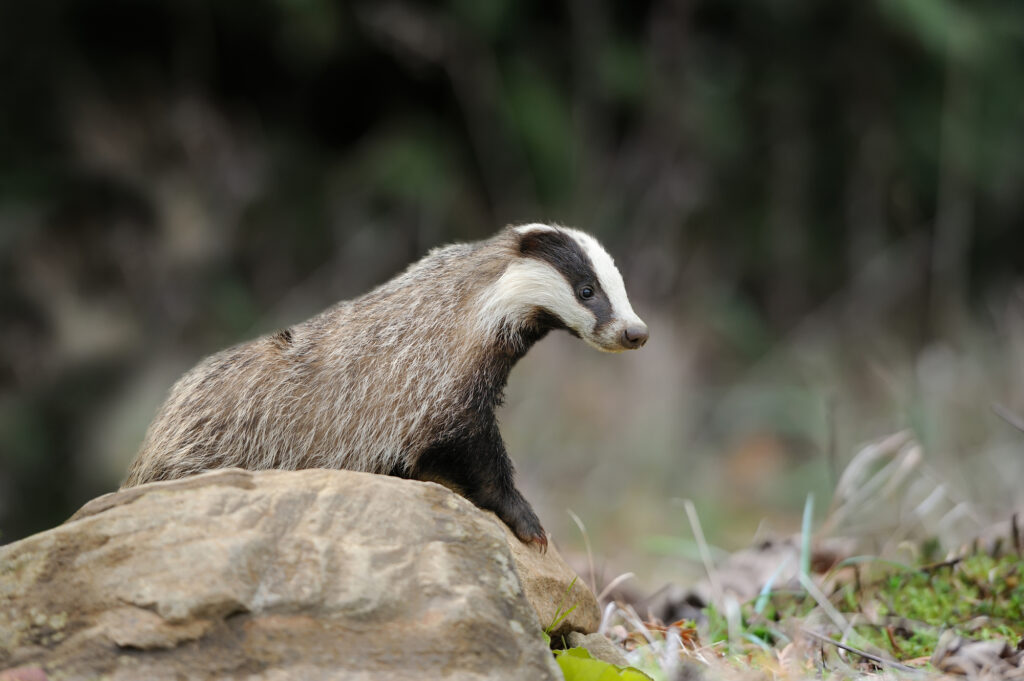Do hawks eat honey badgers? Well, let’s see.
Honey badgers are small carnivorous animals that are found in Africa, the Middle East, and Southwest Asia.
Meanwhile, hawks are a group of predatory birds that includes eagles, falcons, and harriers. They are known for their sharp eyesight and powerful talons, which they use to catch their prey.
So…what gives? Are honey badgers on the menu for hawks? Well, yes and no. Hawks do eat honey badgers when the opportunity arises, but there aren’t many confirmed reports of this happening.
Hawks typically go after smaller prey, but they will kill and eat larger animals if they are hungry enough. Honey badgers are not particularly fast or agile, so they would make an easy meal for a hawk.
However, a honey badger’s large size may act as a deterrent. So, yes, if the perfect set of circumstances arises — i.e. the hawk is nearing starvation or comes across a small or dead honey badger — it may eat it.
Here are a few more facts about the relationship between hawks and honeybadgers.
Do Hawks Hunt Honey Badgers?
If we act on the confirmed knowledge that hawks will feed opportunistically, then we can assume that there have been instances of hawks hunting honey badgers.
However, there aren’t many confirmed instances of this happening. Given that honey badgers are feisty animals, known for their strength and tenacity, it’s not surprising that a hawk would shy away from attacking it.
In all likelihood, hawks see honey badgers as too much trouble for the reward.
However, there has been at least one confirmed sighting of a goshawk staying close to a honey badger, not for hunting purposes. At least not for honey badger hunting purposes. Rather, the hawk was waiting for the honey badger’s prey to flee from it, so it could snatch it up for itself — a perfect example of hawks waiting for an easier meal.
Can Hawks Pick Up Honey Badgers?
No one is quite sure how the rumor started, but for years there have been reports of hawks picking up honey badgers. The idea seems to be that the hawks swoop down and snatch up the small mammals in their talons, then fly off with them to feast on their prey at their leisure.
However, there are several problems with this theory. First of all, honey badgers are not exactly small mammals – they can weigh up to 30 pounds.
That’s a lot of weight for a hawk to carry. Secondly, honey badgers are not exactly easy prey. They are fierce and aggressive animals that are well-known for their ability to fight off much larger predators.
So even if a hawk could manage to pick up a honey badger, it’s unlikely that the hawk would be able to keep hold of it for very long. In short, the idea of hawks picking up honey badgers is nothing more than an urban legend.
Do Hawks Eat Dead Honey Badgers?
Hawks are opportunistic hunters that will eat just about anything they can catch. This includes small mammals like rodents, as well as reptiles, amphibians, and even other birds. While hawks typically prefer to eat their prey alive, they will also consume carrion if it is available.
Honey badgers are among the animals that hawks have been known to eat. Given the opportunity, a hawk will certainly take down a honey badger, whether it is dead or alive.
However, dead honey badgers are not a particularly common food source for these predators. This is because honey badgers are not easy prey. They are fiercely protective of their homes and are not afraid to fight back when attacked.
As a result, most honey badgers that die do so as a result of injuries sustained during battle, rather than being eaten by predators. So while hawks may occasionally consume dead honey badgers, they are more likely to hunt live ones.
What Do Honey Badgers Eat?
The name “honey badger” was derived from the fact that this animal eats honey and bee larvae. They have been observed to attack beehives on a regular basis, lending credibility to the moniker.
However, honey badgers also eat a wide range of other foods, including insects, bee larvae, amphibians, small mammals, reptiles, roots, berries, and other things.
Because these species are found across Africa, Asia, and India, their diets reflect their regions’ characteristics, yet there are some broad trends between them. They have also been documented consuming rats, birds, and poisonous snakes (including cobras, rock pythons, and black mambas).

